WHO THE F*$K IS STAN? and 14 other questions about TRUE DETECTIVE SEASON TWO
The great SLOG-WATCH of True Detective season two is over, and I’ve got a few things to say about it. But I’m not just here to point out flaws, I’m also offering solutions so that maybe we can learn something from the 8 1/2 hours of our lives we devoted to this season.
It was inevitable that from the first minute, the second season of True Detective would be compared to the first, and that would be a tough comp for any series. Season two has been almost universally judged to have fallen short of the bar set by the first season, which featured star talent, cinematic production values, some great writing and fantastic direction. Considering its evergreen pedigree, I can’t help but wonder if season two’s 8 episodes, as is, had aired on a different network, under a different name, if they would have been lambasted so badly. I’d surmise that it would have got off easier, but it still would have attracted a lot of criticism. With or without the comparison to the first season, True Detective season 2 was heavily flawed and utterly frustrating to watch.
I’ve catalogued its sins in the form of 15 moments of exasperation that prompted me to yell questions at my flat-screen. Alas, I was given no answer, chiefly because television sets are still not sentient, so to counter my frustration, I’ve come up with some “fixes” that I think would have helped to solve some of these story issues. Maybe they will help elucidate some writing lessons that you can apply to your own TV pilot.
I wish I could go back in time and convince HBO to hire me as Nic Pizzolatto’s script consultant, but I should probably abandon that hope and just dive into HBO’s upcoming programming, which looks more promising, like David Simon’s Show Me a Hero and Martin Scorsese’s Vinyl.
Let’s dive into the muck, starting with possibly the biggest story issue of the season, which may have prompted you to ask this question:
1. WHO THE HELL IS CASPERE AND WHY SHOULD WE CARE?
There was a huge lack of motivation and emotional investment behind the central story. From the start, we didn’t understand who Caspere was or why we should care about him. A good mystery is not just “Who killed X,” but Who killed X, why and why should we care? The mystery has to be compelling and we have to care that it gets solved by our protagonist/s; if not, you have a big problem. In season one, the victims were innocent women (including a little girl) and their murders were related to occult practices. We were fascinated by the occult ritual element and who could be behind it, we felt for the victims, and we were excited to find out how these two very different detectives would work together to catch the killer. As an added bonus, there was a touching personal connection because they found the first victim on the birthday of Cohle’s (Matthew McConaughey) deceased daughter. As you can see from my Story Map beat sheet of the True Detective pilot, all of these things are communicated in the first five minutes.
But when your dead guy is (apparently) a corrupt, lying, ugly old guy who just bilked one of our leads (who looks to be shady, anyway) out of $5 million, why should we care who killed him or why? If his death were just a red herring or a MacGuffin to get to the real throughline, then it may not have mattered. But the mystery stretched through the entire season, not solved until the final episode (when the killer was revealed to be Caspere’s illegitimate son who killed him out of revenge for a robbery that claimed the life of his mother in 1992. The illegitimate son’s mother, that is, not Caspere’s mother. Or something like that. Was that worth the wait?).
As creator Nic Pizzollato has said he was inspired by classic Noir fiction, I can’t help but think of the famous story about when Raymond Chandler was asked who killed the limo driver in his novel, The Big Sleep. Chandler replied “I have no idea.” If you’ve read the book, you know that it’s true — the limo driver’s murder is never explained; it’s just a catalyst to raise the stakes and get the plot moving at a higher pace. But Raymond Chandler got away with it because he’s Raymond Chandler and because The Big Sleep is an incredible book and we are so busy luxuriating in the words that we don’t notice or care if there is a red herring or two.
I think Pizzolatto figured he could get away with the same thing, as long as people got interested in the rail corridor plot and how it ties to a bunch of bigwigs who like to go to Kubrickian mansion orgies. But a) Caspere’s murder was not dropped, and b) the rail corridor plot was even more boring!
THE FIX: Start the story earlier. Eliminate the need to explain the whole situation to the audience. Show us Caspere, alive, before you kill him. Open Vince Vaughn’s story on the scene of him handing over his life’s savings to Caspere. We see the hope on Vince’s face, the vulnerability. He really believes his ship has come in, and this Caspere guy is the one to bring it. He’s the father figure that Vince never had. But there’s an unsettling feeling; we know something’s not right with Caspere or this deal. Then when he turns up dead, we immediately know the stakes: Vince just lost his life’s savings. He doesn’t need to EXPLAIN it in dialogue in at least three scenes.
It’s funny, I often give out the note to join the story later, in progress, rather than sooner. But, in this case, I think backing up the timeline would have also helped with Colin Farrell’s story…
2. DID RAY KILL THE WRONG GUY OR NOT?
As with Vince, I don’t feel Colin/Ray’s pain because this entire situation with his wife’s rapist happened in the past and had to be explained in dialogue. It was entirely told, not shown. What was shown is Ray being an alcoholic, self-destructive, violent, child-abusing maniac. Thus, I never fully invested in his story of redemption.
THE FIX: They already showed us a flashback of Ray getting the name of his wife’s rapist from Frank. Continue the flashback (or revisit it by the end of the first episode) to show a conflicted Ray making the terrible choice to gun down this stranger. We’re now clear on the source of his internal conflict and his relationship to his bosses, his ex-wife and Frank. No confusion, no question of did he kill the guy or not, and when he finds out later that he killed the wrong guy, his rage has much more impact. SHOW, don’t Tell!
3. ANOTHER HELICOPTER SHOT?
You can’t fake atmosphere. How many helicopter shots of factories do we need to see before they actually make us feel something? Why did these helicopter shots of industrial sprawl evoke nothing in us while the helicopter shots of the Louisiana bayou in season one created a palpable sense of dread?
Why did the many smoldering close-ups of Colin Farrell, Taylor Kitsch and Rachel McAdams evoke nothing, while a one second shot of Matthew McConaughey checking his pulse before a shootout makes the hair on the back of your neck stand up?
I don’t know, but that’s why you need a good director. And a great editor. Great writers can create palpable atmosphere on the page, but 99% of them don’t know how to create it on screen.
THE FIX: Hire better directors. Ideally, one great director, like Cary Fukunaga with Season One, who maintained consistent tone, pacing and performances throughout the whole season. Not Justin Lin, who is best known for The Fast & The Furious, which has no edge, no sense of reality and terrible performances.
4. DOES EVERYONE NEED TO BE IN A SHAME SPIRAL?
There was a sameness to the four leads this season. They all drank/drugged too much, had brutal tempers, and had terrible emotional and/or physical scars from past injustices. They all had terrible parents (Especially fathers. There was a big father thing this season!). There was no contrast. We were told why we should care about them (e.g., Frank’s monologue about his father locking him in the basement for four days. Yeah, that’s terrible, but it doesn’t justify him being a pimp and shaking down poor immigrants for protection money.) but not shown enough to really make us invest in them.
THE FIX: Look at Season One’s Cohle (Mattew McConaughey) and Hart (Woody Harrelson) for an example of contrast between characters. Okay, technically, they both drank/drugged too much and were violent men with bad tempers. But one was a loner and the other had a family. One was an Atheist and the other a Christian. One lived by a code and the other was a cheater. One lost a kid and the other had two that he took for granted. They had a personal blowup that led to years of not talking. But they were brought together again because of the case. We wanted them to catch the killer, because we cared about those victims, and we knew that it was the only thing that made any sense in these guys’ lives.
5. DOES THE CHUBBY GINGER KID EVEN LIKE HIS DAD?
It took me seven episodes to realize why I didn’t have sympathy for Ray losing his son.
His son didn’t show an ounce of interest in him.
The kid never told Ray he loved him, missed him, or wanted to live with him rather than with his stable, loving mom and step-dad. Throw in that Ray is abusive to the kid and totally unequipped to be a responsible parent, and yeah, I’m not exactly rooting for Dad to get full custody.
THE FIX: Write a single line of dialogue for Ray’s kid: “I want to live with you, dad.” Or, more heart-breaking: “I heard mom say you might not be my dad. You’re my dad, right? Tell Mom you’re my dad!” Something like that. May seem cheesy on the page, but I guarantee we’d be wiping tears away at the sight of that freckled squirt burying his face in his dad’s belly, sobbing.
6. WHERE DID THAT COME FROM?
Plot points were just dropped on us, too often, with little setup or consequence. Like when Ray shows up for a meeting in a parking lot with the prosecutor, Katherine Davis, only to find her dead, with a bullet hole in her chest. This sets up the need for a static dialogue scene in which Ray discusses the murder with his colleagues.
THE FIX: Use cause and effect. Write setup scenes that allow US to immediately understand the payoffs. In the case of the dead prosecutor, show a scene where she meets with a character we think is an ally (maybe the stoic police sergeant who rocks the afro puffs), and as she leaves, he nods to a guy in the corner who has his hand in his jacket pocket, ready to pull his piece in case the meeting went sideways. Now, when she shows up dead, we know it was this dude that killed her. And we know that Ray and crew do not know it was this guy, so we’re ahead of them and waiting for them to catch up to our knowledge (which creates urgency, momentum and expectations).
There were also moments that negated the established cause. E.g., when Rachel McAdams kills the security guard at the mansion party, she seems to come to the conclusion later that she only killed him because she was hallucinating that he was the man who molested her when she was a girl. She’s shocked and regretful. But a) the guard was trying to kill her so she was justified in taking him out, b) we’d just seen her practicing the exact knife techniques she used on the guy so her actions came as no surprise to us, c) she killed a bunch of dudes in a firefight a few days prior, so what’s the big deal, and d) where the hell did this weirdo molester flashback come from? It’s backstory that she shares with Ray later, but it feels forced.
7. WHAT DO YOU MEAN, YOU FOUND MY BAG OF MONEY THAT’S BEEN SITTING ON THE TOP SHELF OF THE ONE CLOSET IN YOUR TINY MOBILE HOME FOR FOUR YEARS?!
The dumbest plot point I’ve ever seen in a television show. Ever.
Let’s analyze. Taylor Kitsch hates his mom. She’s a broke, alcoholic loser who lives in a trailer and still blames him for the loss of her (promising, I’m sure) career as a Vegas showgirl. That’s right, his mother blames him for being born. And he hates her so much that he puts his finger in her face and calls her a “useless fucking cooz” (or something lovely like that). So what does he do? First, he continues to visit her, hoping she’ll come around and show him some love and appreciation, especially when he brings the joyous news that he’s having a baby. Guess how well that turned out.
Second, and here’s where it gets amazing…he is shocked to discover that the money he planted in a duffel bag and hid in his mom’s closet is gone. Shocked! And that would normally be dumb enough, but get this: he put it in there four years ago.
I just…can’t.
Now, you may think that some trimming could have salvaged the scenes with Mommy Dearest, like when she said she carried her son for 9 months, not once, but twice in the same scene. Just cut out the second line, right? No. That’s not enough. There is only one solution, and it can only be described as Shock and Awe…
THE FIX: Cut the mom character entirely. Leave every one of her scenes in the trash bin. She added nothing. Nothing.
8. CHURCH IN RUINS? OMEGA STATION?
This season of True Detective has some terrible episode titles. The Western Book of the Dead. Black Maps and Motel Rooms. Pretentious much? I suppose they’re okay on their own (not really), but they’re even worse when considering, in most cases, that they have nothing to do with their respective episode.
THE FIX: Don’t be a pretentious wanker when naming your episodes. Make them have some connection to the story, if only tangentially. Choose words that go together, that complement one another so the phrase rolls off the tongue. Church in ruins? Egads. Compare it to some of these episode titles from season one: Form and Void, Haunted Houses, After You’ve Gone, Seeing Things, The Long Bright Dark.
Maybe some of the titles could have flowed from dialogue? Speaking of dialogue…
9. “HE LOOKS HALF ANACONDA, HALF GREAT WHITE.”
Weirdosayzwhatnow???
True Detective Season 2 had some terrible, awful, no-good dialogue. The kind of dialogue that wakes you up at four A.M. with a punch in the gut from fists of iron and sorrow. Ya hear me, King Farouk? (That was my homage to Frank’s dialogue.)
I feel sorry for Vince Vaughn. Not only was he initially miscast, but any chance he had to turn it around was forever torpedoed when they gave him some of the worst lines in television history. Let’s look at some of his gems, mixed in with some others…
“The enemy won’t reveal itself, Raymond. It stymies my retribution. It’s like blue balls…in your heart.”
“That guy’s been around less in the last three months than my wife’s period.”
“Look in my eyes, dipshit, and see if I’m whistling Dixie.”
“Sometimes a good beating provokes personal growth.”
“These tunnels run underneath the whole city. I bet you didn’t know that.”
“Never do anything out of hunger, not even eating.”
Contrast those doozies with this simple exchange from the first season:
COHLE I'm a realist, but in philosophical terms, I'm what's called a pessimist.
HART What's that mean?
COHLE It means I'm bad at parties.
HART Let me tell you, you ain't great outside of parties, either.
That exchange is why season one worked and season two did not. It wasn’t the case that was most important or most entertaining, it was the character dynamics between Rust Cohle and Martin Hart. (But the case also happened to be compelling, unlike this season.)
THE FIX: Do a table read so you can hear your dialogue spoken aloud. Listen. Not just to the dialogue and how it flows, but to the notes you solicit after the reading. But, even before this, accept that this neo-noir, hard-boiled, overwrought dialogue style is REALLY hard to pull off. It works brilliantly in a Raymond Chandler novel, and it can rock a screenplay page, but when the camera rolls, it’s hard for an actor, ANY actor, to make this dialogue work, unless the style of the entire piece is over the top (e.g., Sin City). Throw in that your actor is one who does not come easily to dramatic roles (Vince Vaughn) and you have a major problem. (For the record, I think Vince Vaughn did the best he could with the dialogue he was given, so I can’t fault him for his performance. It wasn’t just a bit of miscasting — I think the true culprit was the script and direction.)
10. GET TORONTO CASTING ON THE LINE. WE NEED SOME TOUGH-LOOKING WHITE GUYS!
They seemed to have spent so much time on casting their four star lead roles, they rushed the casting of supporting characters. One of the reasons why I never bought Vince Vaughn as a mob boss: his bodyguards looked like they’d have trouble working the door at a Chuck E. Cheese. When you’re casting menacing, intimidating bodyguards who are supposed to make you piss in your pants just by standing in the corner of a room, don’t use David Cronenberg’s casting agent. (You ever notice how every heavy in a Cronenberg film looks like the whitest guy in Toronto?)
I know Frank was meant to be a relatively small-time gangster, but there was ample evidence that he carried a pretty big stick. His entourage of toughies (including, but not limited, to, STAN THE INVISIBLE MAN, RASPY VOICE FOREHEAD SCAR GUY, and MALE BLACK SWAN WITH ACNE.) looked like they should have been wearing Baby Bjorns in line for the changing station in the bathroom of a Vancouver Applebee’s.
And, by the way, when it came time to throw down, Vince proved he was fine on his own. Him boxing Danny Santos (the large gentleman with the fancy, gold-plated mouth grill) was one of the best scenes of the season, primarily because we didn’t see it coming. It was not only surprising but it moved the story forward with action, not just forced dialogue. (It also included perhaps the one glimpse of “funny” Vince Vaughn when he pulls out Santos’ gold grill and says “I always hated these fucking things. What kind of a way is that to greet the world?”) Ditto Vince torching his casino and night clubs: a nice turn that showed character through action.
THE FIX: Cast some tougher bodyguards. Think Danny Trejo, not Danny McBride. On a related note…
11. WHO THE F*%K IS STAN?
Bottom line, there were too many characters with nebulous connections to the plot. It felt like Pizzolatto just wanted to populate his world to populate his world, so he kept throwing in new characters, many of which were primarily offscreen. Case in point, our good buddy Stan. Frank is crushed when Stan turns up dead. But, wait, did Stan have a single line of dialogue? Why should we care when he’s killed? Remind me, did we even see him get killed or was this yet another plot point that was told to us after the fact? (I’m pretty sure Frank just found his dead body, but, honestly, I don’t care enough to confirm it.) This beat also repeats when Frank discovers the corpse of the hooker in the junk yard.
THE FIX: Write a scene where Stan helps Frank out of a jam and we learn that they’ve been friends since childhood. Aside from his mumble-mouthed moll, Stan is Frank’s only true friend. Then we will really feel Frank’s pain when Stan becomes collateral damage in the war with his nemesis, that Russian mob boss, whom I’m pretty sure was originally named “Putin H. Central Casting.”
12. QUINT: “YOU KNOW THE THING ABOUT A SHARK, HE’S GOT…LIFELESS EYES, BLACK EYES, LIKE A DOLL’S EYE.”
It took 40 years for the true subject of Robert Shaw’s monologue in Jaws to be revealed, and here she is…
Kelly Reilly’s performance as Jordan Semyon is maddening. Did they direct her to act stoned the entire time, or was she method-acting and actually getting stoned before each take? Who decided that she deliver every single line with the same dead monotone? It wasn’t until her final scene with Frank in the train station that her one-note, dead-eyed performance added a second note: anger. I’m guessing that’s not enough to garner her a SAD award nom.
THE FIX: Give this character a defining characteristic other than she wants a baby. Asking us to care about the fertility issues of the train wreck that is Jordan and Frank is preposterous. Beyond that, now that I think of it, her character really had no active function in the entire story. She was, at times, the voice of reason, but more so, she was the excuse for Vince to unload his many monologues. He couldn’t just deliver them into the mirror (actually, that would not have felt out of place here) so he had to have someone in his life who would listen. Ultimately, it’s sad that the female character with the second highest amount of screen time was the definition of the throwaway girlfriend role.
13. DID THE FUNNY FAT GUY JUST GET SHOT IN THE HEAD?
Don’t kill off your only source of comedic relief after only four episodes. I was just starting to like DIXON, the paunchy, shady detective on the task force, when he gets capped in the big gunfight in episode four. Just like the huge shootout itself, his death comes out of nowhere, and we are also robbed of a potentially strong beat, when the detectives could have confronted Dixon with the evidence of his duplicity. Speaking of that shootout…
14. REMEMBER THAT AWESOME SIX MINUTE LONG SINGLE-TAKE SET PIECE THAT PUSHED THE BOUNDARIES OF TELEVISION?
Season two’s big shootout was a bore. After that thrilling sequence in the row houses in season one, this season’s big midpoint set piece needed to bring the thunder. Firstly, it had to flow organically from the story, with clear, high stakes for the protagonists. And secondly, it had to be a technical marvel. It achieved neither goal. It was just a big, familiar shootout on what looked like a Hollywood backlot. The direction and editing were workmanlike, at best, a pale shadow of the brilliance of season one. Moments were confusing, like when an entire floor of a building suddenly exploded, with no explanation or consequence. And it ends with Vince Vaughn looking at the smoking building from a distance, and we have no idea how he may be connected to this event. But the biggest question of that scene was…
15. WHERE DID THOSE MEXICAN GANGSTERS COME FROM?
Obfuscation does not make a TV show literary. The shootout is one of many examples of an unclear beat that we had to wait to have it be explained later. A good screenwriter knows that you can’t constantly set up the need to have a beat explained after the fact. The reader will get frustrated. And so will the viewer.
It’s true that in the modern era, we sometimes have to look up details online to fully understand elements of a TV series. I never would have fully tracked all of the characters and lingo in The Wire without DVD extras, wiki pages and even subtitles for some of the particularly impenetrable dialogue. During season one of True Detective, the internet was abuzz with analysis of Cohle’s philosophical musings and links explaining The Yellow King. But there’s a difference between compelling and confusing. I couldn’t wait to get online to find answers to my questions with those shows, but with season two of True Detective, I couldn’t wait to get on Twitter to complain that I had no frickin’ clue what was going on, and worse, I didn’t care.
This seems to be a growing trend in serial television: over-complicating a narrative with too many characters and subplots, in an attempt to seem intelligent, artsy or “literary.” But there’s nothing wrong with a piece of literature that is coherent and focused. In fact, call me crazy, but I prefer it!
Another example would be the subplot with the Hollywood starlet (Ashley Hinshaw) who accuses Taylor Kitsch of soliciting sexual favors. I think this was included to develop his character, maybe provide some misdirection that he wasn’t gay? But if he’s gay or not doesn’t ultimately matter, because he got his girlfriend pregnant, which means he’s capable of having sex with women, which means he could have done it. But he didn’t, because he’s a good guy. I think.
Oh, wait, I just remembered the function. Her accusation got him put on leave. This gives him the incentive to join the task force with Ray and Ani. But his incentive was already there – if he plays ball, they’ll make him detective. And his connection to Caspere’s murder was already solidified when he found the body. Although, now that I think about it, he said he just wanted to stay on his motorcycle in the CHP, so he did not want to become a detective. Which makes him reluctant to take the case. And this adds…what? Why can’t he want to clear the case? Why couldn’t his situation with the Hollywood starlet have somehow given him some insight into Caspere’s murder? Whatever the explanation, we didn’t need the embarrassing incident with the actress unless it was going to clearly plug into the plot and pay off later in an active way.
THE FIX: Why not just show us what happened? E.g., He refuses her advances, which shows us he’s a good guy and also supports the revelation later that he’s gay. Or just cut the entire meaningless subplot.
So those were some of the big things that bugged the crap out of me during season two of True Detective. I was not alone in my frustration. But despite the level of mass viewer hating, the season did well in the ratings, which leaves just one question…
WHAT THE HELL WILL THEY DO FOR SEASON THREE?
Good luck and happy writing,
Dan Calvisi
Related: True Detective pilot beat sheet
Related: The Story Maps Master Class
Related: More on TV Writing
Related: My screenwriting webinars
Explore True Detective and many more great television pilots in STORY MAPS: TV DRAMA: The Structure of the One-Hour Television Pilot.

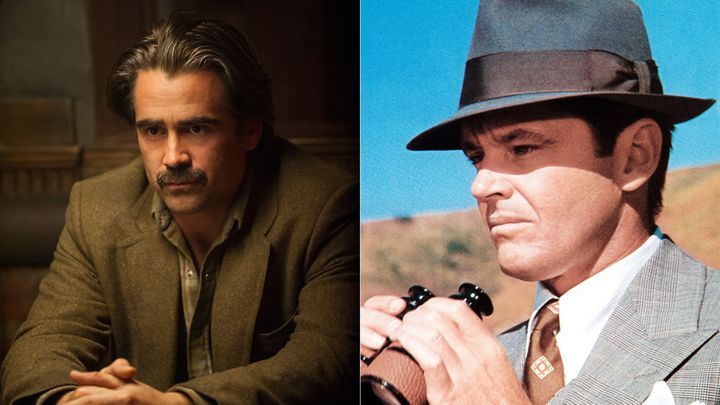
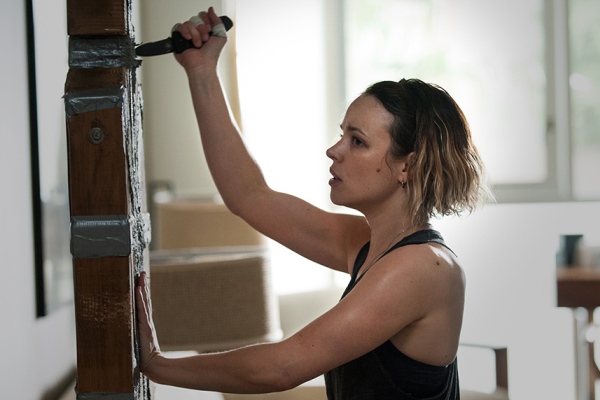
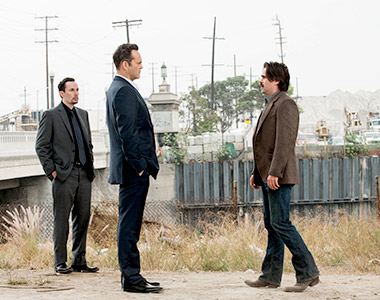
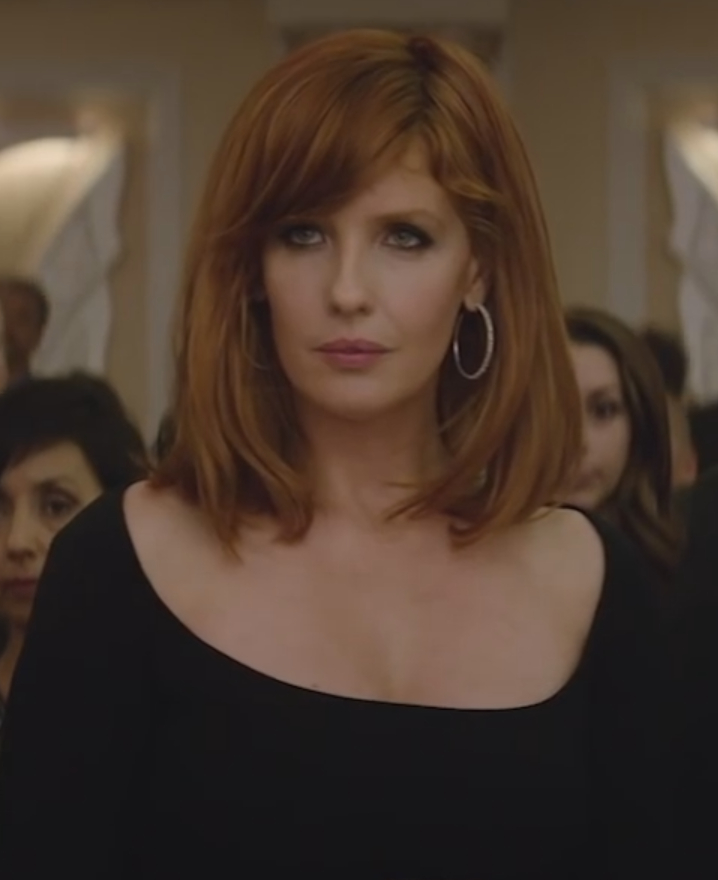

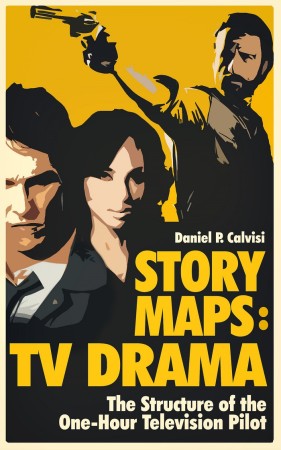



I do find the story maps helpful. My frustration so far is almost all of the samples are for a single protagonist film.
What about films like Crash, City Slickers, Beautiful Girls, Mash, etc that have a more or less equally weighted set of story lines running for different protagonists with different external goals? In most cases the internal goals appear to be more or less in common. Maybe that’s the key?
I’d like to see more samples like that, that cover complex stories. McKee calls these “multi plot.”